Owls are a few of the most interesting feathered creatures in the world. They are known for their unmistakable appearance, nighttime propensities, and exceptional chasing aptitudes. This article will take you on a travel to investigate the different sorts of owls, their grand assortments, and their special highlights. Understanding the diverse sorts of owls and their characteristics will donate you a more profound appreciation for these wonderful creatures.
Key Highlights of Owls
Vision and Hearing
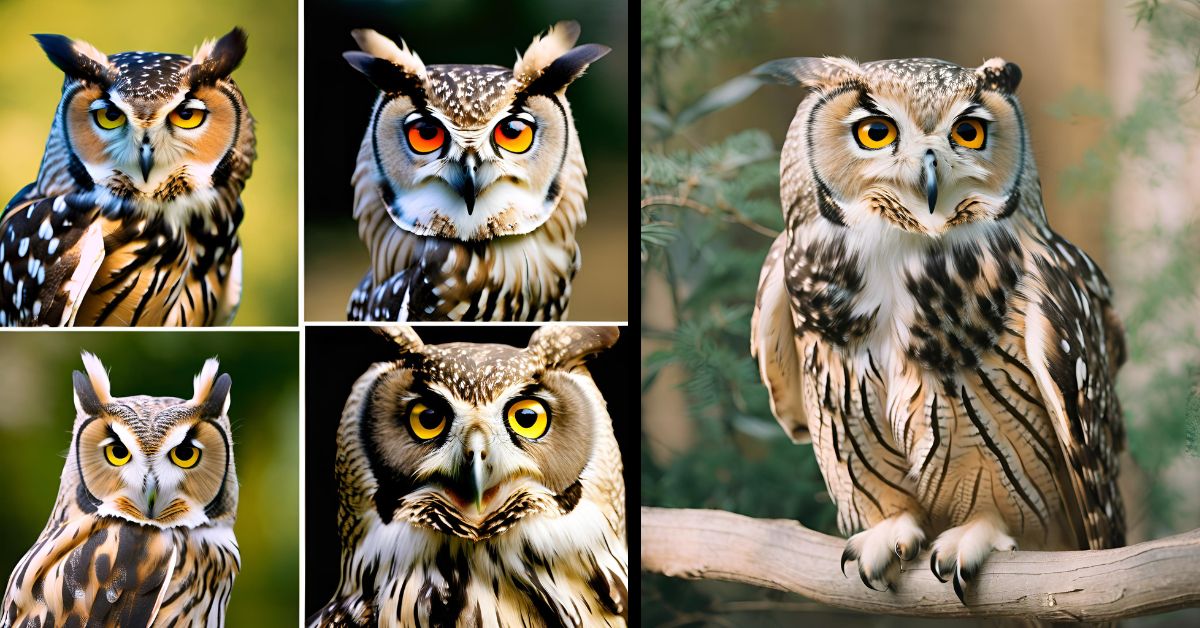
Owls are eminent for their extraordinary vision and hearing, which are vital for chasing. They have expansive eyes that confront forward, giving them with binocular vision. This permits them to judge separations precisely. Their eyes are moreover adjusted to see in moo light conditions, making them great nighttime seekers. Also, these have a interesting course of action of plumes around their faces that makes a difference coordinate sound to their ears, improving their hearing.
Silent Flight

One of the most momentous highlights of owls is their capacity to fly quietly. This is due to the interesting structure of their quills, which diminishes clamor. The driving edges of their flight plumes have a serrated plan that makes a difference suppress the sound of discuss passing over the wings. This noiseless flight is a critical advantage when chasing, as it permits them to approach prey without being detected.
Powerful Claws and Beak
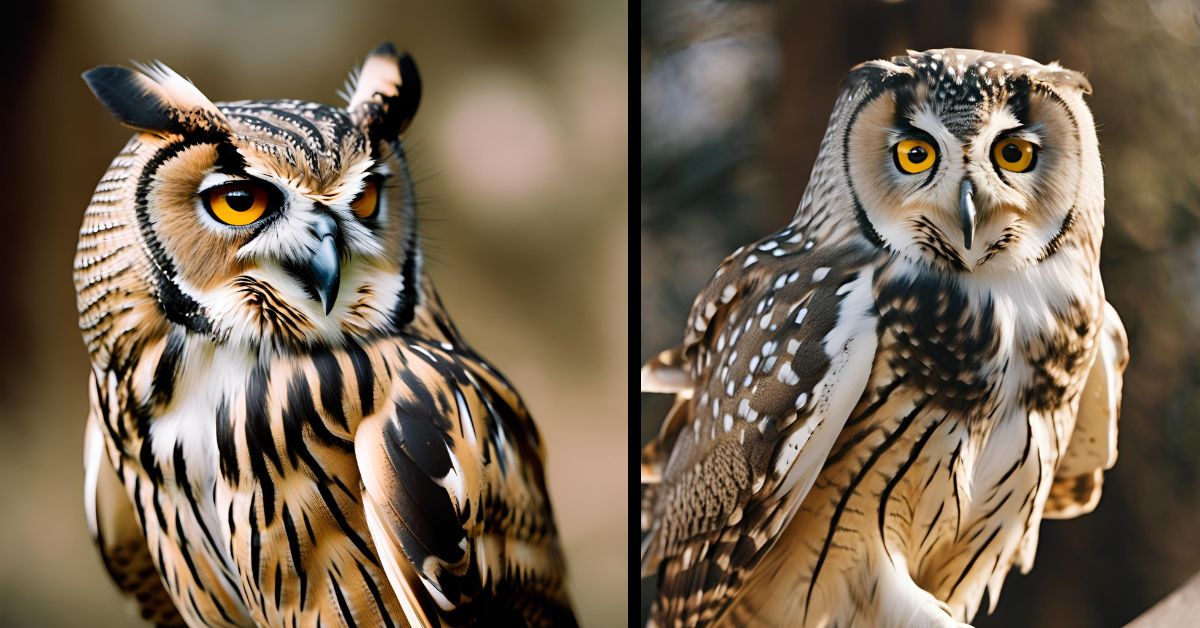
Owls have solid claws and a effective nose, which they utilize to capture and slaughter their prey. Their claws are prepared with sharp claws, empowering them to get a handle on and hold onto their prey safely. The bill is snared and sharp, perfect for tearing flesh.
Types of Owls:
Barn Owl (Tyto alba)
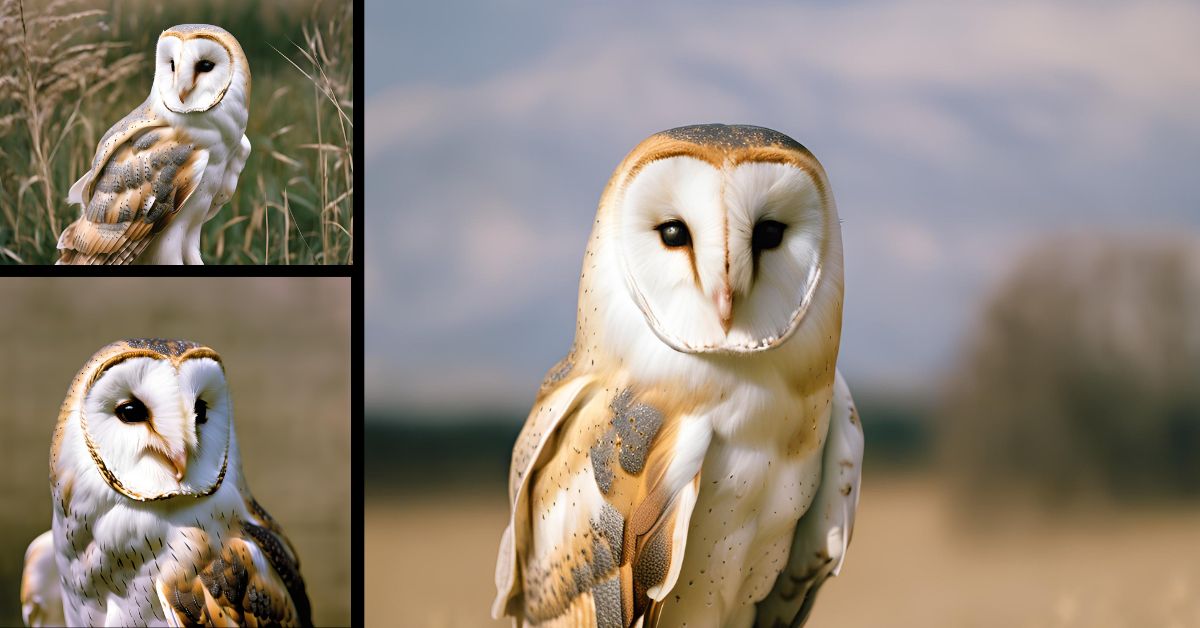
The Animal dwellingplace Owl is one of the most broadly recognized sorts of owls. It is known for its unmistakable heart-shaped confront and white, dotted plumage. Animal dwellingplace Owls are found on each landmass but Antarctica. They lean toward open environments such as areas and glades, where they chase for little mammals.
Unique Features:
- Heart-shaped face
- Silent flight
- Excellent low-light vision
Great Horned Owl (Bubo virginianus)

The Incredible Horned Owl is a effective and versatile feathered creature of prey. It is effortlessly recognized by its noticeable ear tufts, or “horns,” and its yellow eyes. These are found all through the Americas and can live in different territories, from woodlands to deserts.
Unique Features:
- Prominent ear tufts
- Deep hooting call
- Powerful talons
Snowy Owl (Bubo scandiacus)
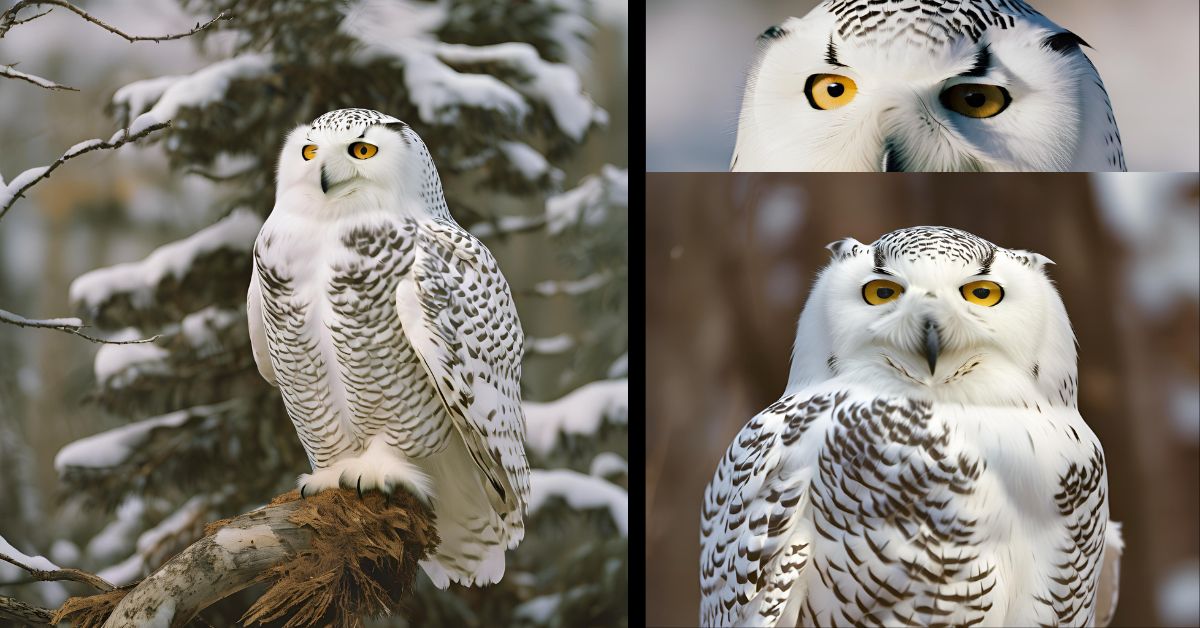
The Cold Owl is one of the most striking sorts of owls, known for its unadulterated white plumage with dark markings. It is local to the Cold locales and relocates to more calm zones amid the winter. Blanketed Owls are diurnal, meaning they are dynamic amid the day.
Unique Features:
- White plumage with dark markings
- Diurnal habits
- Adaptation to cold climates
Burrowing Owl (Athene cunicularia)
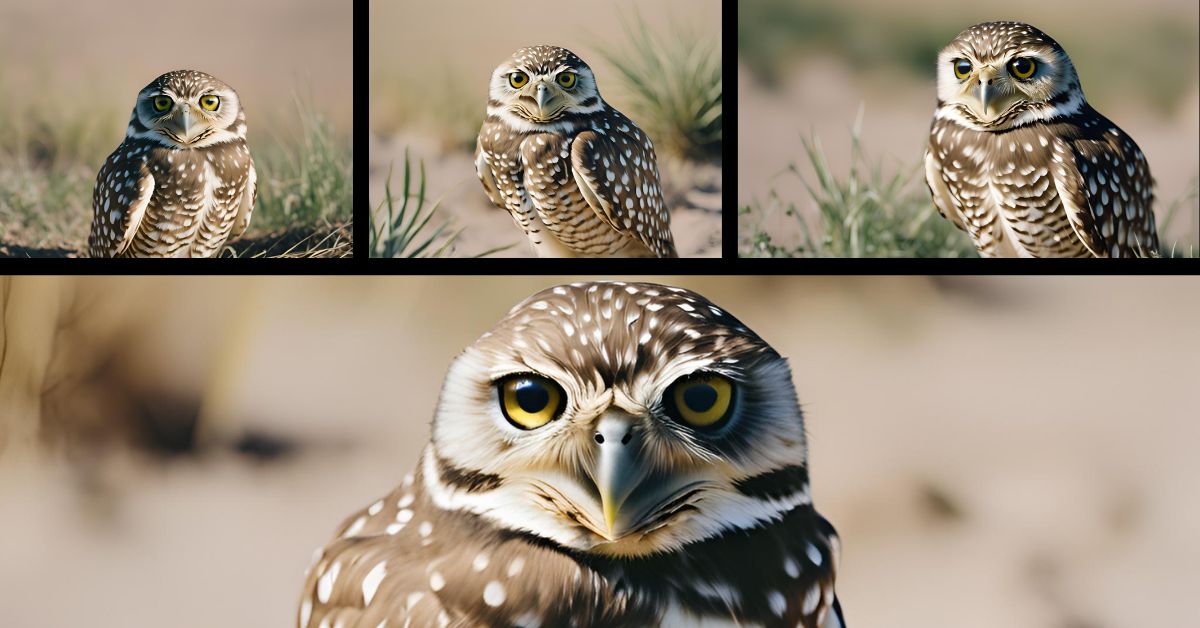
The Burrowing Owl is a little, ground-dwelling owl found in North and South America. Not at all like most owls, it is dynamic amid the day and lives in burrows underground. These lean toward open scenes such as prairies and deserts.
Unique Features:
- Ground-dwelling
- Daytime activity
- Long legs for running
Eastern Screech Owl (Megascops asio)
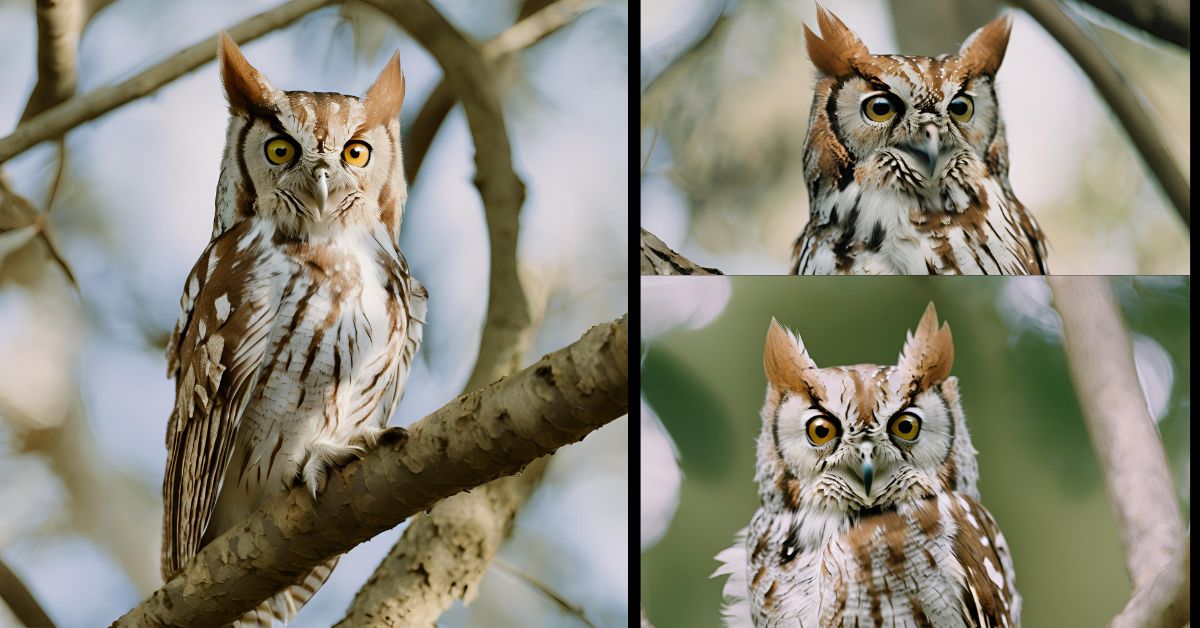
The Eastern Shriek Owl is a little owl found in eastern North America. It has a stocky body and brief tail, with plumage that can be either gray or reddish-brown. These are known for their spooky, trilling calls.
Unique Features:
- Small size
- Trilling calls
- Camouflaged plumage
Barred Owl (Strix varia)
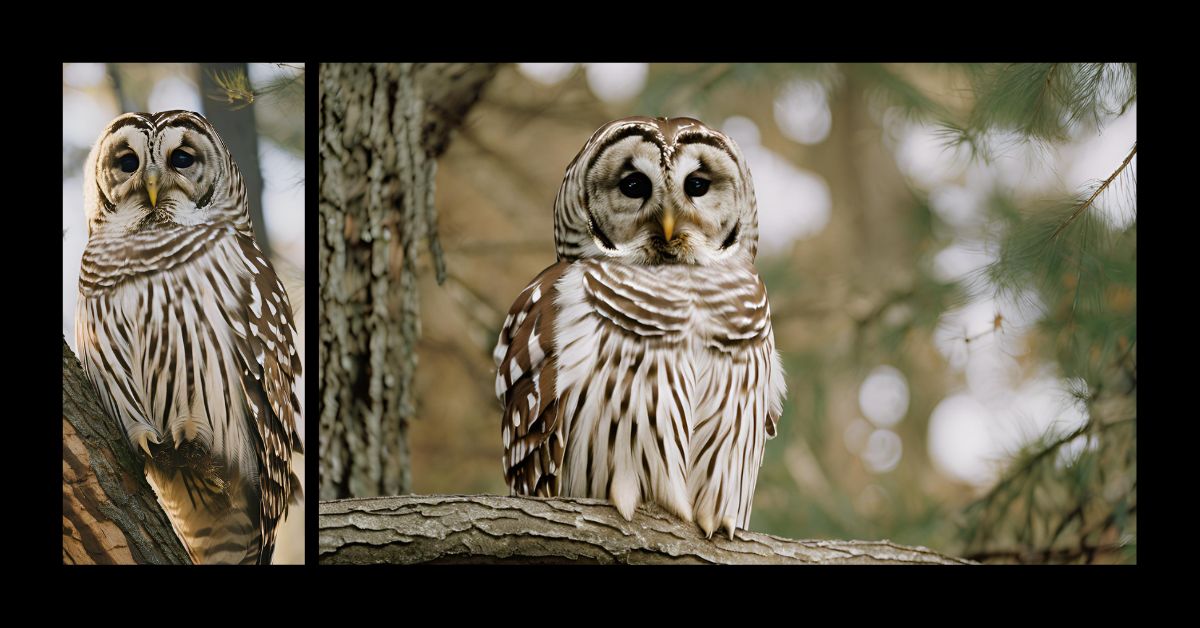
The Banned Owl is known for its particular “Who cooks for you?” call. It has a adjusted head with no ear tufts and brown eyes. These are found in lush ranges over North America.
Unique Features:
- Rounded head
- Brown eyes
- Distinctive call
Northern Saw-whet Owl (Aegolius acadicus)
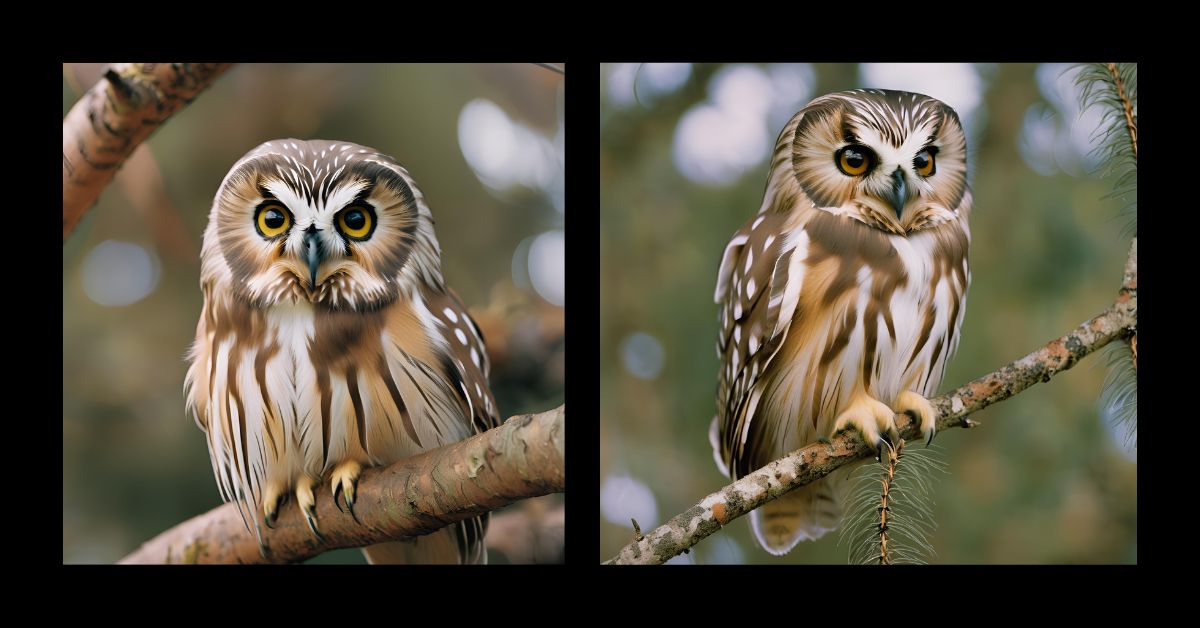
The Northern Saw-whet Owl is a little owl with a circular head and huge yellow eyes. It gets its title from its call, which sounds like a saw being honed. These are found in thick timberlands over North America.
Unique Features:
- Small size
- Saw-like call
- Large yellow eyes
Long-eared Owl (Asio otus)
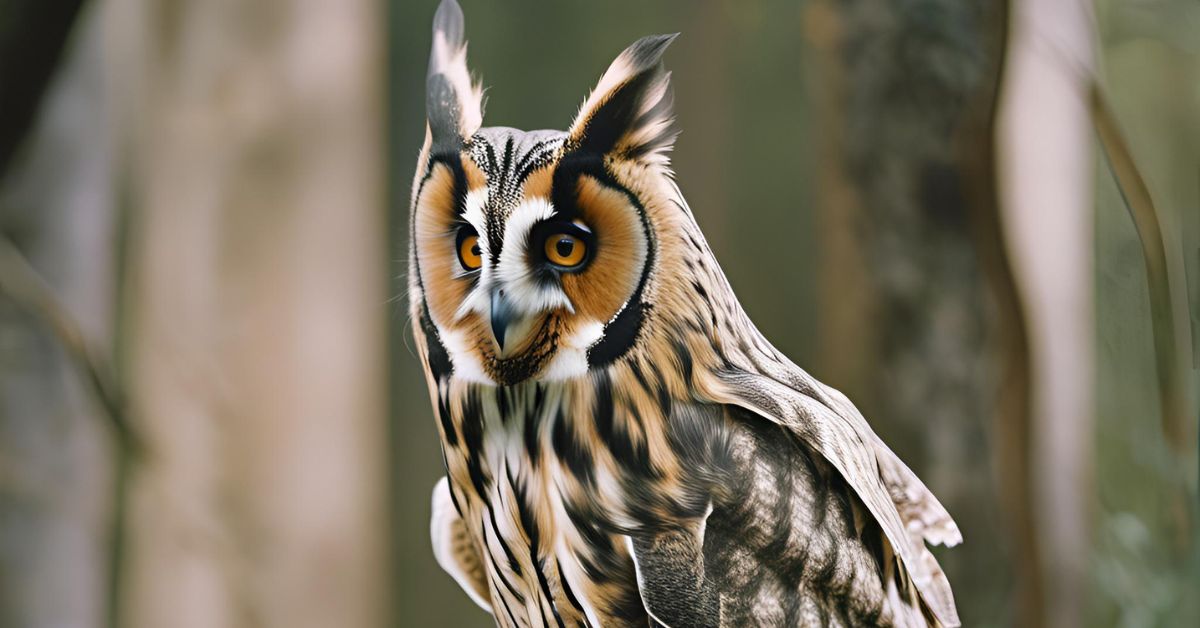
The Long-eared Owl is known for its long ear tufts, which it can raise or lower depending on its temperament. It has a slim body and is well-camouflaged with dappled brown and gray plumage. These are found in North America, Europe, and Asia.
Unique Features:
- Long ear tufts
- Slender body
- Excellent camouflage
Short-eared Owl (Asio flammeus)

The Short-eared Owl has little, scarcely obvious ear tufts and is known for its unmistakable, buoyant flight. It is found in open living spaces around the world, counting prairies, swamps, and tundra.
Unique Features:
- Short ear tufts
- Buoyant flight
- Preference for open habitats
Elf Owl (Micrathene whitneyi)

The Mythical being Owl is the littlest owl in the world, standing at approximately 5 to 6 inches tall. It is found in the southwestern Joined together States and Mexico. In spite of its little measure, it is a furious seeker, preying on creepy crawlies and little vertebrates.
Unique Features:
- Smallest owl species
- Fierce hunter
- Prefers leave habitats
Owl Environments and Adaptations
Forests
Many sorts of these, such as the Extraordinary Horned Owl and the Banished Owl, incline toward timberland territories. These situations give plentiful cover and chasing openings. Forest-dwelling these regularly have plumage that makes a difference them mix into the trees, giving camouflage from predators and prey.
Grasslands and Open Areas
Species like the Burrowing Owl and the Short-eared Owl flourish in open living spaces such as prairies and prairies. These are regularly ground-dwellers, utilizing burrows for settling and chasing in open spaces.
Arctic Regions
The Cold Owl is a prime illustration of an owl adjusted to Cold locales. Its white plumage gives camouflage in the snow, and it has a thick layer of plumes to protected against the cold.
Deserts
The Mythical being Owl and Burrowing Owl are well-suited to forsake situations. They are regularly littler in estimate and have adjustments to adapt with the extraordinary temperatures and restricted water supply.
Urban Areas
Some of these birds of night, such as the Horse shelter Owl, have adjusted to living in urban and rural regions. These owls frequently settle in buildings and chase for rodents in areas and parks.
Diet and Chasing Techniques
Small Mammals
Many sorts of this bird of night, counting the Animal dwellingplace Owl and Extraordinary Horned Owl, basically chase little warm blooded creatures such as mice, voles, and rabbits. They utilize their sharp visual perception and noiseless flight to find and capture their prey.
Insects
Smaller this bird of night, like the Mythical being Owl, frequently bolster on creepy crawlies. These owls are dexterous seekers, capturing creepy crawlies in mid-air or on the ground.
Birds
Some these birds of night, such as the Long-eared Owl, moreover prey on littler fowls. They are gifted at catching fowls in flight or whereas roosting.
Fish
A few owl species, such as the Blakiston’s Angle Owl, specialize in chasing angle. These owls have longer legs and specialized claws for grasping dangerous prey.
Conservation and Threats
Habitat Loss
One of the essential dangers to this bird of night is environment misfortune due to deforestation, urbanization, and agrarian development. Numerous species depend on particular territories for settling and chasing, and the misfortune of these ranges can have a critical affect on their populations.
Climate Change
Climate alter moreover postures a risk to owls, especially those in Ice districts like the Cold Owl. Changes in temperature and climate designs can influence the accessibility of prey and reasonable settling sites.
Human Activities
Human exercises, such as pesticide utilize and chasing, can moreover adversely affect owl populaces. Pesticides can diminish the accessibility of prey, whereas chasing and catching can straightforwardly diminish owl numbers.
Conservation Efforts
Conservation endeavors are fundamental for securing owl species and their environments. These endeavors incorporate environment rebuilding, legitimate assurances, and open instruction almost the significance of bird of night in ecosystems.
FAQs
What is the most common sort of owl?
The most common sort of owl is the Animal dwellingplace Owl. It has a broad dissemination and is found on each landmass but Antarctica.
How do owls see at night?
Owls have expansive eyes with a tall number of bar cells, which are delicate to moo light. This permits them to see in the dull and chase viably at night.
Why do a few owls have ear tufts?
Ear tufts in owls, such as the Incredible Horned Owl and Long-eared Owl, are not related to hearing. They are thought to offer assistance with camouflage and communication by making the owl show up bigger and more intimidating.
What do owls eat?
Owls are carnivorous and have a shifted count calories depending on the species. They regularly eat little well evolved creatures, feathered creatures, creepy crawlies, and sometimes fish.
How do owls hunt?
Owls chase basically by utilizing their extraordinary vision and hearing to find prey. They fly noiselessly, swooping down to capture their prey with their sharp talons.
Conclusion
Owls are captivating and different winged creatures of prey, each species with its one of a kind highlights and adjustments. By investigating the sorts of owls and their magnificent assortments, we pick up a more profound appreciation for these cryptic animals. From the famous Animal dwellingplace Owl with its heart-shaped confront to the minor Mythical person Owl that is the littlest of all owls, each sort has advanced particular characteristics to survive and flourish in its environment.
Understanding the distinctive sorts of owls, their living spaces, and their diets makes a difference us recognize the significance of protecting these grand fowls and their biological systems. Whether they are chasing in the profundities of a woodland, taking off over open prairies, or adjusting to urban situations, owls play a vital part in keeping up biological balance.


